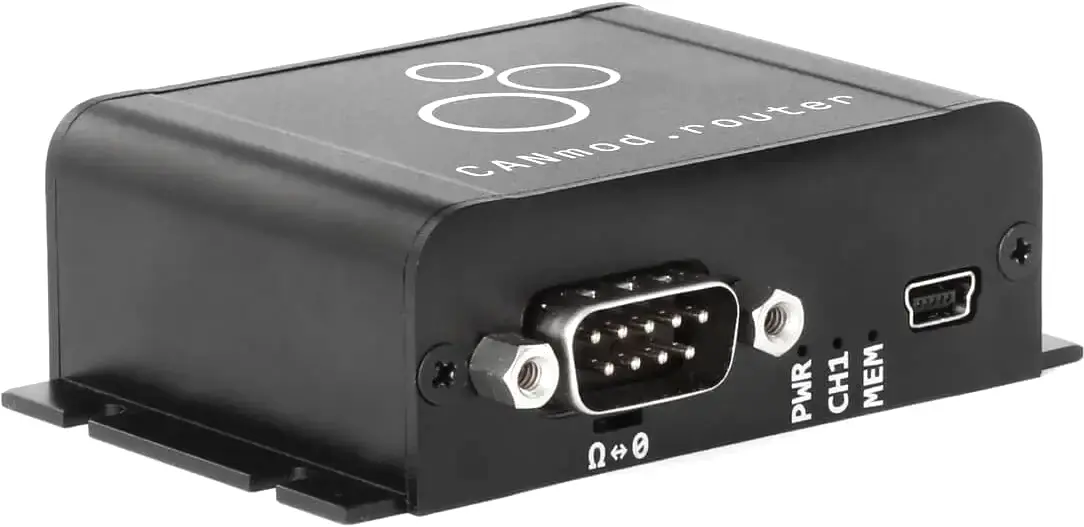Introduction

CANmod.router
Note
Most of the detailed technical information contained in this manual can be found by exploring the configuration section.
The CANmod.router routes CAN-bus (standard or FD) traffic between (both directions) a primary (CAN-P) and four secondary (collectively denoted CAN-S) galvanically isolated CAN-buses. The routing mode determines how traffic is routed between CAN-P and CAN-S. All CAN-buses (CAN-P, CAN-S1, CAN-S2, CAN-S3, CAN-S4) support CAN-FD and can each be configured with an individual bit-rate (or advanced bit-timing).
Each CAN-S supports advanced message filtering and prescaling (count, time or data) to reduce the number of messages received and processed (see Filter). In addition, each CAN-S can be instructed to automatically transmit messages periodically (see Transmit).
Note
See the Use cases section for typical use cases.
CANmod.router conceptual illustration
Warning
When configuring the CANmod.router, care should be taken to ensure that the combined load from the four CAN-S does not exceed the capacity of the CAN-P bus.
Direct-mode routing
In direct-mode, the CANmod.router (generally) forwards messages directly[1] between CAN-P and CAN-S. Filters can be configured in both directions (P-to-S and S-to-P) to only forward specific messages (based on ID, ID-format, frame-format, etc.). Additionally, message IDs from CAN-S to CAN-P can optionally be re-mapped to avoid ID duplication on CAN-P.
Mux-mode routing
In mux-mode, a user (CAN-bus node) connected to CAN-P (directly or via USB) can communicate with the CAN-S buses as if directly connected to each bus. Traffic on the CAN-S buses is packaged and carried on CAN-P using a configurable set of message IDs[2].
Note
Find software tools supporting mux-mode on csselectronics.com.
The default CANmod.router mux-mode configuration is defined in below DBC-file (uses custom DBC attributes to define the MUX transport-protocol). The DBC file can be used to configure software tools to expect the use of the mux-protocol on specific message IDs.